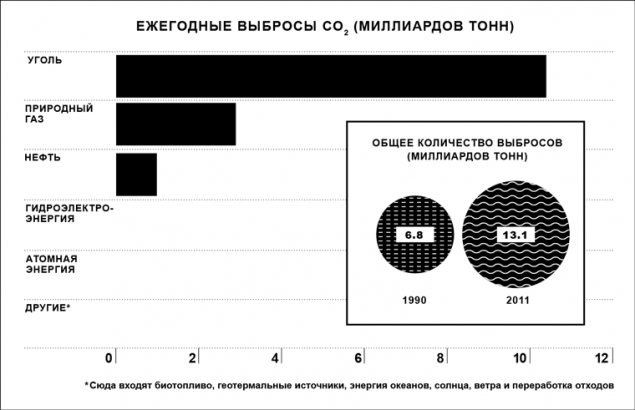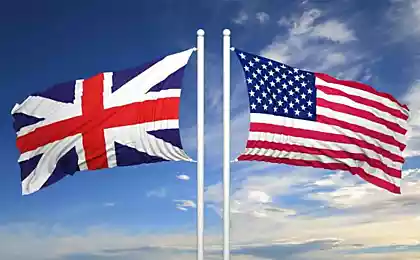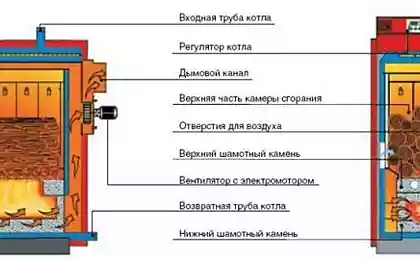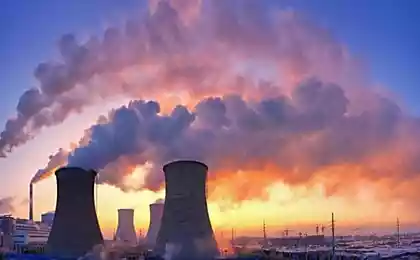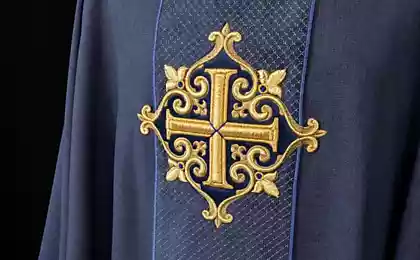1613
Renewable sources is not enough. Clean Coal - Energy of the near future
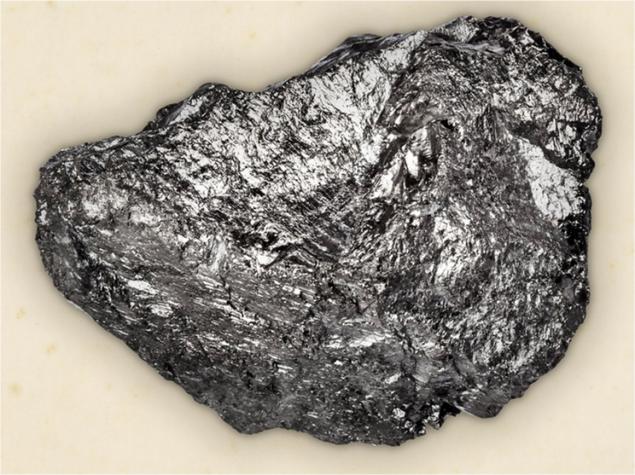
Today, coal produces more than 40% of the world's electricity, actually being the foundation of modern life. I>
In this article, we will focus on the current situation with the use of coal in power, why do not currently possible to abandon it, and the new technology of purification of coal combustion products and their distillation for later use. - Approx. interpreter. i>
Proof that good things do not always wrapped in a beautiful package can be found by taking the fast train from Beijing to Tianjin, and after having driven to the coast. Tianjin, the third largest city in China, was established as a seaport of Beijing on the Yellow Sea, but in recent years, the city has developed and made fit for that amount of land on its coast dirty that he actually began to move inland, but right the water, a new port, the life in which the activity is boiling. This hyper-industrial area, a clogged highway trucks, there are dozens of factories and commercial enterprises, each of which consists of a plurality of pipes, reactors, valves, ventilation vents, vascular plants to cracking, compressors, chimneys and distillation units. In short it is a landscape, to which James Cameron could seek inspiration while working on the ending of Terminator 2.
Among these structures, such as large and impersonal, like its neighbors, there is a building which is called GreenGen - giant state electricity company, built the Chinese Huaneng Group, together with a number of other companies, departments of the Chinese government and, not least, Peabody Energy, the largest private coal company from Missouri.
By Western standards GreenGen - secretive place. My application for an interview, and a trip there for weeks remained unanswered. When I finally decided to pay them a visit, the protection in place, not only denied me access, but refused to confirm the name of the company. Drove away from the entrance, I saw the blinds on one of the windows moved over and through them, for my departure watched someone's eyes. I think that behave - stupid, because GreenGen - enterprise worth billions, which extracts carbon dioxide from coal-fired plants, and through special channels moves it into underground storage, which is many miles from the place of his burning. Part of a new wave of businesses operating on coal, can be called the most consistent efforts of China, and perhaps the whole world, to combat climate change.
Most people rarely sees coal, so they have a habit imagined it as a relic of the 19th century, black mass lying in the streets of the Victorian era. But in fact, a piece of coal, which is found almost everywhere artifact of the 21st century, is as much a symbol of our time, like iPhone. Today, coal produces more than 40% of the world's electricity, actually being the foundation of modern life. This percentage is growing: in the past decade, coal has made a great contribution to the world supply of electricity than any other of its source.
Nowhere has the advantage of coal does not become so obvious as in the fastest growing, most populated region of the world: Asia, and particularly in China. Over the past couple of decades, China out of poverty several hundred million people. It is possible that this can be called the largest in the history of the rise in the level of welfare. This progress could not take place without industrialization, which, in turn, could not happen without coal. More than 75% of the electricity produced in China with its help, including power for the electronics giant factories where iPhones are going. More coal is spent on heating millions of homes, melting steel (China produces almost half the world's steel), roasting limestone for cement production (China produces almost half of the cement produced in the world). In his feverish quest for development, China burns as much coal as the rest of the world, and already this fact alone makes climatologists shudder.
China already emits a quarter of the world's greenhouse gases - more than any other country. According to estimates of the International Energy Agency, a research organization based in Paris and sponsored by 28 developed countries, Beijing will double the number of coal-fired plants by 2040. If this happens, the performance of China on the development of carbon dioxide will increase in two or even in three. "Coal is too cheap, it so much and he too is available through a reliable supplier to him something to replace - says analyst on fuel sources, John Dean, president of consulting firm JD Energy, - China is establishing the production of solar and wind energy are booming, but he will have to use more and more coal to meet growing demand. »
However, the dependence on coal - a problem not only in China. Countries around the world, even the European states, which advertise their performance in relation to the environment, understand that they are not able to wean themselves from coal. Germany, which is often praised for the fact that she stood under the banner of solar and wind energy, not only receives half of its energy from coal, but also, in 2013, opened up more coal plants than in any other year in the last two decades. In neighboring Poland, 86% of electricity is generated from coal. South Africa, Israel, Australia, Indonesia - they all depend on coal more than ever. United States, in some degree, is an exception: the share of coal in electricity generation in America has fallen from 49% in 2007 to 39% in 2013, to a large extent, due to start production of shale gas by hydraulic fracturing, which dramatically reduced prices of natural gas, a competing fuel. However, critics rightly point out that coal exports from the US reached record levels: the proportion of "red-blue-white" coal in Europe and Asia have never been so sharply is not increased. According to the Institute for the world's resources, a group of scientists conducting environmental studies, nearly 1200 new large coal enterprises will be built in 59 countries worldwide. As climate scientists warned in November, in a joint statement, the sharp increase in the use of coal leads to "the effects of which can only be described as catastrophic.»
This, in a certain way, brings me back to the inhospitable venture in Tianjin. GreenGen - one of the most important in the world attempts to develop a technology called carbon capture and storage, or CCS ( the collection and storage of carbon - approx. Interpreter i>). Essentially, CCS is very simple: Industry burn as much coal as before, but remove all contaminants. In addition to the purification of the soot is now standard practice in large factories will be separation of carbon dioxide and pumping it underground, where it can be stored for thousands of years.
Many researchers in the field of climate and energy believe that this technology is vital to avoid climate catastrophe, as it would allow worldwide continue to burn their most abundant resource, while dramatically reducing emissions of carbon dioxide and soot. And though this will hardly speak often, but it can be even more important than any future technologies based on renewable sources, which could occur in the coming decades. Himself Steven Chu, a physicist, Nobel Prize winner, who was Minister of Energy of the USA until last year, called CCS essential. "I do not know how we can move forward without it," - said Chu.
The rate of energy consumption i> (Оригинальный size) i>
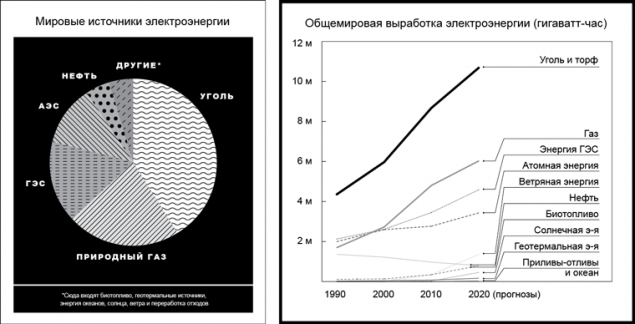
Our dependence on coal is far from over. Despite the fact that renewable energy is waiting for the boom in the next decade, coal will remain the main source of energy in the world. I>
Sorry to do this step will be incredibly difficult. Despite the fact that the basic concepts are clear and understandable, the development of reliable, large-scale hardware in CCS will require a lot of time will be unpopular and breathtakingly expensive. Engineers will need to spare neither money nor time to rigorous calculations, finalization and dangerous experiments. In the end, the world will get a few thousand huge buildings that everyone will be an eyesore. At the same time, environmentalists oppose the technology, convinced that it is a sop to the coal industry at the expense of cleaner alternatives such as solar and wind energy sources.
As a consequence, CCS simultaneously recognized critical technology of the future and, at the same time is in a difficult situation. In 2008, at the summit of the Group of Eight, the energy ministers of the participating countries have recognized the key role of collecting and storing carbon and "strongly supported" the recommendations of the International Energy Agency to launch the "20 large-scale CCS demonstration projects" by 2010. However, the number of projects world actually decreases. The exception is China, where in the planning or production is ten large enterprises CCS.
China is probably well suited to the role of the leader as the most polluted place in the world coal. In addition to this, there are energy companies partially owned by the state and therefore they can not actively suing the government to stop the CCS program. In this case, do not wait for their fines, nor the Government, nor from lawyers shareholders, if the introduction of this expensive, experimental technology affect their profits. In any case, all others should be grateful to China for the fact that he comes into play, said Fatih Birol, chief economist of the IEA. We need someone to find a way to collect and store carbon dioxide on a large scale until it is too late.
"I do not know any other technologies that have been so crucial to the health of the planet and, at the same time, so bezinteresny for us - says Birol - China - seems to be the only place in the world where it grows.»

